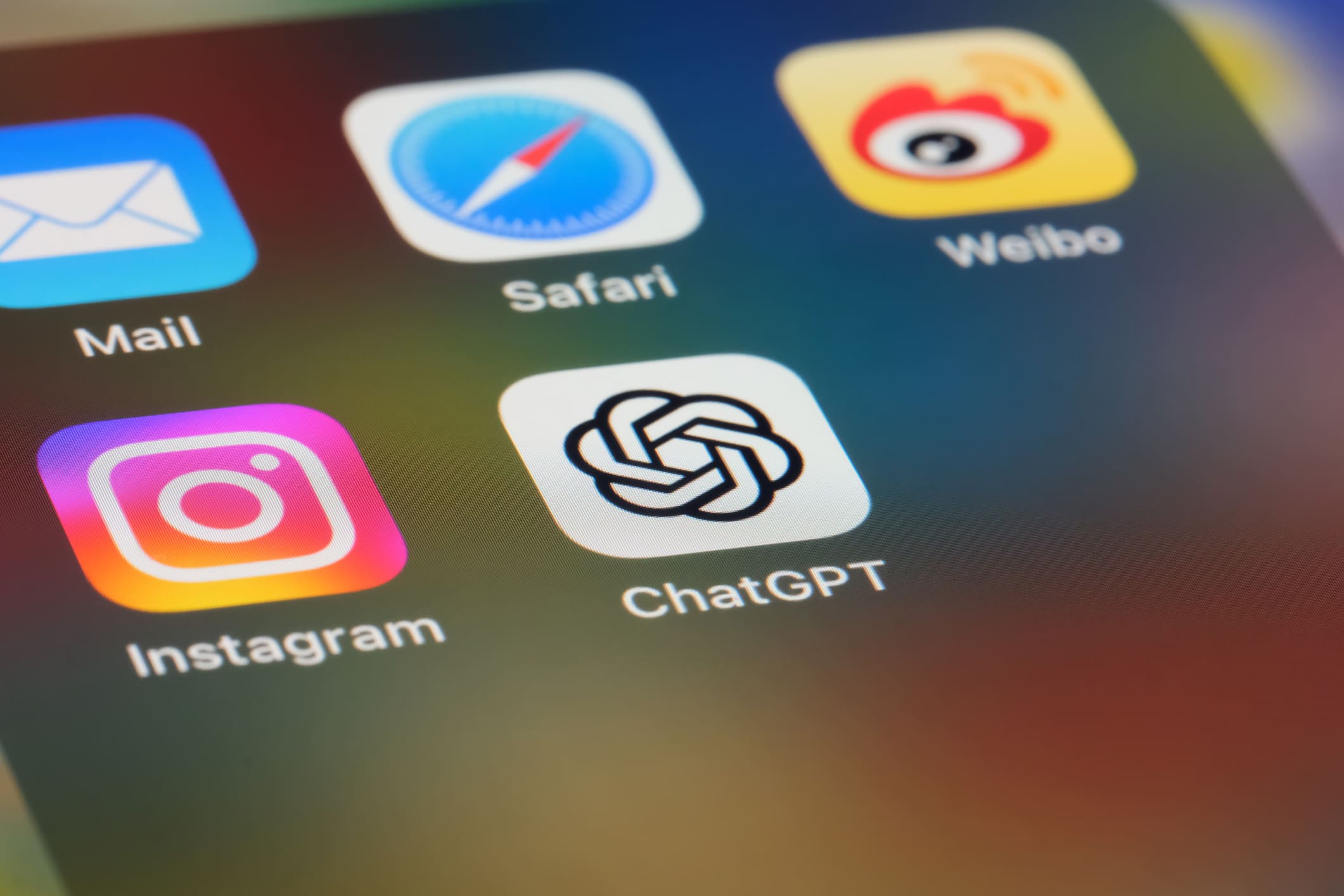
How Tools Like ChatGPT Are Being Evaluated for Customer Success
It’s Good. Scary Good.
What Generative AI Is
Does ChatGPT (and its rising number of competitors) really warrant the excitement? For those who sat on the waiting list long enough to get hands-on with it, the answer has generally been yes. No, it’s not perfect, but it’s impressive. And it’s only going to get better from here.
Over 40% of adults in the United States are already aware of ChatGPT and it’s the fastest growing consumer software application ever.
For those who don’t yet know what it is or what it does, the short version is that, when given a query, it can be used to generate content remarkably like what a human can create. It’s often used for chatbots, to reply to user questions. Its replies/output can range from one-sentence answers to a whole blog post or a video depending on what you tell it to do and what AI tool you’re using. (Note: No ChatGPT was used in the writing of this blog – It’s all human.)
What Generative AI Isn’t
Where does generative AI get the information to create all this stuff? It pulls from whatever source you tell it to (for example, the internet) and crafts a response from that source information without directly copying (to avoid bot-plagiarism). Like any tool, it has limits:
- Its knowledge isn’t infinite, as noted above, it has to pull information from somewhere. If it’s asked about a niche topic or recent developments, it might not have anything to pull from.
- It’s not ideal for creating longer, structured, or highly specialized content because it’s mostly aggregating information as opposed to creating thought leadership or naturally deciding how to organize information.
- If the data is biased, then the AI will be biased. Some may think that, because it’s data-driven, it’s less biased than a human. But remember that it’s pulling data that was collected by humans.
- It’s limited by the prompts you give it – like in the early days of Google, the user has to learn how best to submit a request. It might struggle if you ask it more than one question at a time or don’t give it a clear objective. However, you can have a conversation with it to feed it additional context, details, and instructions to refine its output. If you’re not satisfied with the first answer it gives, continue to refine your prompt.
- It lacks what you might describe as the “human” element. It can mimic empathy, but it doesn’t fully understand the subtlety of human social cues, communication, and emotion (though the same might be argued for some people). It might not do well responding to humor or sarcasm, and when you’re using it to create images it may not have the best stylistic “eye.”
All that said, generative AI is a powerful tool when used thoughtfully. And it learns each time you engage it, so the results you’re able to generate should improve over time. For customer success programs, there are several use cases where ChatGPT and generative AI can help you help customers get the most out of your products and turn them into super-using advocates.
Using ChatGPT for Customer Success, Support, and Engagement
On a recent episode of the “Gain Grow Retain” podcast, hosts Jeff Breunsbach and Jay Nathan talked about several possibilities for leveraging ChatGPT in scaling Customer Success programs.
Collecting Intel and Deepening Personas
Though there were no great excuses for skipping customer and market research before, trying to come up with one now is nearly impossible. We hear a lot about using AI for its generative powers, but by design it aggregates information – so it can be leveraged like a more refined search engine. It can help you collect intel without having to manually sift through thousands of links on Google.
- Prepping background: Use it to help you prepare for prospect and customer conversations and get a better idea of an organization’s priorities. What have key executives in your target company said or written publicly? What recent successes and failures has the company had over the past few years? Increasing the speed-of-discovery helps you scale your research efforts because you can get to actionable intel more efficiently.
- Researching competitors and trends: Speaking of research, ChatGPT can also help you learn what customers have said about your competitors and collect information on industry trends and opportunities across the internet. What are common complaints about a competitor company? What are the most highly recommended features people want to see in their community tools?
- Building on personas – If you already know your target personas, use ChatGPT to deepen your understanding. What is this customer segment trying to accomplish? What are the top challenges facing it today? With ChatGPT you can zero in on specifics such as, “What are the main concerns of a VP of customer success at a B2B SaaS company?” And you can keep adjusting the phrasing of your question until you get the exact insights you’re looking for.
- Optimizing strategies – ChatGPT can also help identify the ideal approach for reaching specific personas. What’s the best argument a leader of customer success at a B2B SaaS company can use to achieve subscription renewals? What’s the best way to position this product or service to an executive in this kind of company in this kind of industry? What are the top reasons SaaS subscriptions aren’t renewed? This could lead to pitch points and conversations based squarely on value to the customer.
Customer Success, Support, and Community
Chat GPT can serve a lot of functions for customer success managers and analysts, as well as directors of customer success:
- Answering common questions and guiding new customers: ChatGPT can pull from your knowledge base (for example, your product documentation or previous replies) to quickly respond to frequently asked customer questions, or help new customers get started with the product by crafting easy-to-follow instructions and tips. This frees up your team to focus on more complicated issues.
- Reaching out to customers: ChatGPT can find customers who may need help and start a conversation with them, offering support and resources.
- Summarizing customer feedback: ChatGPT can be tasked with reviewing customer comments, like surveys or support tickets, to find trends and areas to improve.
- Making custom content: ChatGPT can create tailored content, like case studies or guides, for specific customer groups or industries.
As you work to elevate your customer experience and engagement with an online community, you can also use ChatGPT within that community:
- Moderating and responding to forum posts: ChatGPT can monitor online community discussions and respond to questions, provide helpful information, or flag issues for human intervention.
- Generating discussion topics: ChatGPT can analyze community interests and generate relevant, engaging discussion topics to help keep the conversation going and encourage active participation.
- Creating and updating knowledge base articles: ChatGPT can assist in the creation and maintenance of a comprehensive knowledge base, providing detailed, up-to-date information to help customers find answers to their questions.
- Personalizing user experiences: ChatGPT can be used to analyze user behavior and preferences in the community, and provide personalized content, recommendations, and interactions tailored to individual needs.
- Identifying and nurturing community advocates: ChatGPT can help identify active and engaged community members who could become brand advocates and provide targeted resources and support to help them share their experiences and knowledge with others.
Content Creation
ChatGPT can also be used to generate content in many forms, which can be disseminated on your community to drive customer engagement. It’s been used for text to image generation, article to video script generation, text to speech generation, text to music generation, article creation, etc.
Many customer success teams struggle with how to keep up with content generation and how to produce a wide range of content that speaks to very different, specific audiences, with limited resources. That’s a scalability problem ChatGPT can be used to help solve. You can use ChatGPT to help you come up with ideas, outlines, SEO keywords, interview questions, summaries, and more! You can also ask it to write these things in different formats or styles.
From one piece of original content, you might ask AI to create related text and resources, including:
- Content for different learning styles
- Content for different media formats
- Content for different levels of education
- Content for different languages and cultures
- Content for different industries
- Content for companies of varying sizes
- Content for private vs. public companies
- Content for different management roles
- Content that is as personalized as possible
- More effective email headlines and copy
You can imagine the time and resources needed to have an all-human staff create all this from scratch. ChatGPT can make this kind of content scaling work a reality.
A Few Parting Cautions for Using Chat GPT Responsibly
- When considering the use of ChatGPT and other generative AI tools, check with your organization and the relevant parties to ensure you’re following any internal polices that may apply to data privacy and security or the use of AI.
- Human editing and fact-checking is still required.
- The resulting content depends greatly on the information source you’re using and how well you master the initial prompt
- The content will be devoid of your brand’s voice, tone, and personality unless you’ve trained your own generative AI chatbot that writes and adheres to it.
- From the “mouth” of ChatGPT itself, “as a language model, ChatGPT does not have the capability to determine if its answers infringe on copyright laws. It is the responsibility of the user to ensure that their use of ChatGPT’s responses complies with relevant laws and regulations.”
Overall, don’t try to use ChatGPT to replace humans or cheat the human relationship-building element. It’s a tool that can be used to increase your efficiency – whether by researching and collecting information, drafting an outline, or taking a first pass at ad text. But it needs human oversight.
On the content creation side, there are specific instances where a personal touch is not as vital. Exercising common sense around when a boilerplate content piece is all a customer needs and when – for example, if you’re responding via email to a customer crisis situation – direct, human interaction should remain best practice.
The power of ChatGPT in the CSM context is related to scaling. Customer discovery, for example, is something you were already doing. This tool allows you to do it faster, which in turn translates into an ability to research more customers and bring more value to the face-to-face interactions you eventually do have with them.
Get hands on with ChatGPT while it’s still free to get a sense of how it can help you. Explore how it returns answers and content based on how you phrase and rephrase your input. Find out what’s discoverable about your companies of interest outside of Google’s long list of links. See for yourself how this revolutionary technology might fit into your customer success toolbox.


